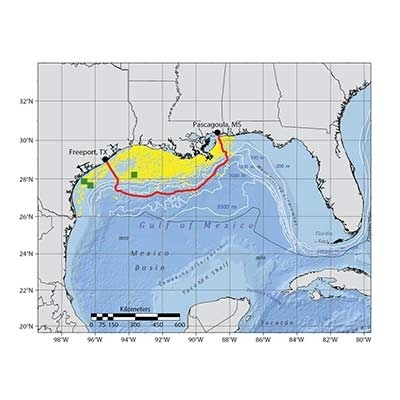
Enhancing the Ocean Observing System to Meet Restoration Challenges in the Gulf
Enhancing the ocean observing system to meet restoration challenges in the Gulf of Mexico
As a result of fines and penalties generated by the settlement of civil and criminal actions and the Natural Resource Damage Assessment and Restoration (NRDAR) claims resulting from the Deepwater Horizon (DWH) incident, various entities are poised to receive billions of dollars to improve the health and resilience of the Gulf of Mexico large marine ecosystem. While much of the funding will go to economic development in states impacted by the oil spill, the lion’s share will be used to restore specific natural resources damaged as a result of DWH and to tackle larger and more chronic environmental issues such as loss of wetlands, nutrient enrichment, fisheries sustainability, and toxic contaminant management. In addition, the federal RESTORE Act directs that some of these funds will be used to improve long-term monitoring of the Gulf of Mexico ecosystem.
It was clear during the DWH response phase that important ocean parameters, such as current speed and direction, water chemistry, air quality, and biological effects of oil exposure, were not being sampled well, necessitating significant technology upgrades (Lubchenco et al., 2012). Many of these observations have not been sustained. Before making new observing investments, however, the objectives, priorities, and governance across the many entities involved (Table 1) need to be critically considered. The outcome of these deliberations should be a coastal and ocean observing system that is right-sized, with a unified set of priorities, that is capable of supplying adequate science to restoration planners, and that realizes the specific intents of these new funds in ways that are both cost-effective and forward-looking.
The President charged the Gulf Coast Ecosystem Restoration Task Force (2011) to develop a Gulf of Mexico Regional Ecosystem Restoration Strategy, and in doing so stipulated four overarching goals: (1) restore and conserve habitat, (2) restore water quality, (3) replenish and protect coastal and marine living resources, and (4) enhance community resilience. These goals are specific and outcome-oriented and therefore should guide the development of priorities for enhancing the science supporting them. The Task Force has since been replaced by the Gulf Coast Ecosystem Restoration Council, which has adopted the four Task Force goals and added a fifth: restore and revitalize the economy (Gulf Coast Ecosystem Restoration Council, 2013.


